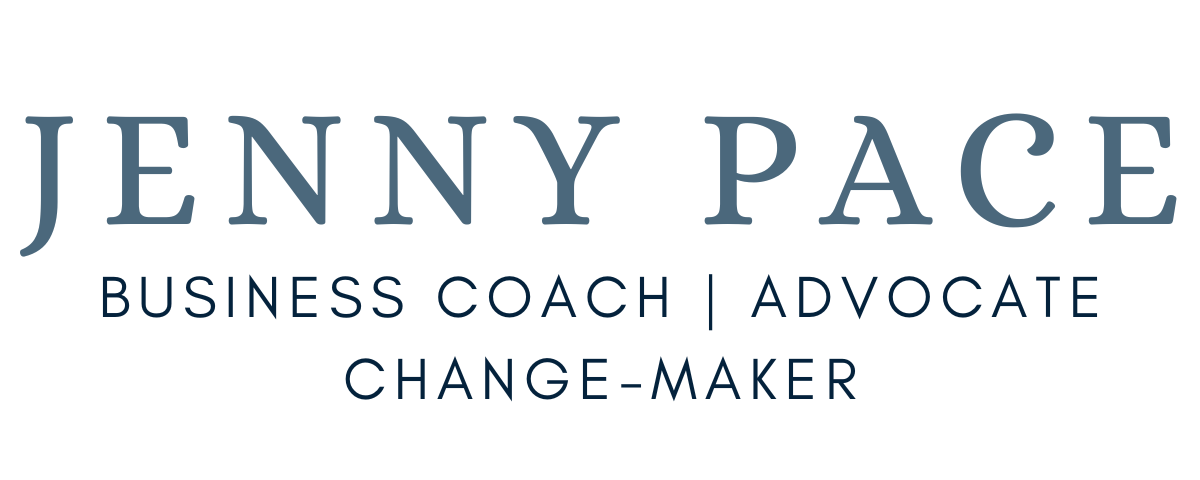There are so many courses, coaches, and programs out there, and a lot of them offer incredible value, wisdom, and resources… For the people that truly need them.
So how do you decide whether a course is right for you, right now?
- It’s for you if… it solves a problem you’ve already identified.
I hope that you’ve already figured out the things holding you back. There are plenty of ways people can tell you about a problem you didn’t even know about, and then sell you the solution. Sometimes that’s helpful. Sometimes it’s not a problem you need to fix RIGHT NOW.
I see a lot of people in the industry selling education about Facebook ads. But if you don’t have the budget, and don’t know what you’re trying to achieve or the wider strategy to support it, that course isn’t for you RIGHT NOW.
But you’ve probably identified a few things that you need to work on or need help with, and you can prioritise them first.
So if a course or coach is solving a problem you’ve already identified, go ahead and find out more! If you didn’t know about this problem, check in with yourself: is it really a priority for you right now?
- It’s for you if… you can afford it.
There are two factors to affordability.
The first is can you afford to pay for it right now? If you have the literal cash in your bank account at this very moment, great! Keep finding out more. If you don’t, and would consider putting this on a personal or business credit card, you need to be really, really confident that you’re going to get a return on your investment, and in the relatively short-term.
Because that’s part two: the ROI. I’m all for investing in your personal, professional, and business development. This is essential for growth. And sometimes gaining confidence and a positive feeling is worth the investment without any numbers on it, but let’s also give our brains the opportunity to do some maths.
To cover the cost of this course, coach, or program, what level of revenue would you need to bring in? For example, The Better Business Collective is £250 when you pay upfront. If you’re a product-based business (the core business type for The Collective) and you have a 25% profit margin on your products (the rate I recommend as a minimum), you need to make £1,000 in sales to cover the cost of the program.
Since The Better Business Collective is four months long, you’d need to make £1,000 over the course of four months to break even on the investment.
So when you look at the program and the resources offered, are they tools that will help you to make MORE THAN £1,000 on top of your normal turnover in that time frame? (I’m fairly confident that the email templates, marketing support, business review, and live workshops will bring in a lot more than that, just for the record…)
You can use this same calculation for any course, coach, or program.
- It’s for you if… you can commit to the time required.
It’s really easy to purchase a course and figure out when you’ll actually do it later. Read the sales page carefully. Does it have a clear estimate of how much time you’ll need to actually make use of the resources? If not, red flag! And if so, is that manageable for you?
For example, if you sign up for The Better Business Collective, I recommend having about an hour to 90 minutes a week available to work on the program materials and make the most of the community. That includes these monthly activities:
- The monthly Game-Changing Success Ritual preparation (1 hour) and live call (1 hour)
- Time to create your email and other marketing content (either on your own, or in an hour-long live workshop)
- Getting support from me and the community each week in the focus and flow community posts
You might decide to take extra time to plan a photoshoot to support your marketing content, for example, or dive deeper into your Game-Changing Success Ritual preparation and analysis. But to really get the benefits of the resources, 60-90 minutes a week is ideal. (And yes, you can spend less time on it in December!)
- It’s for you if… it supports your learning style.
How many of us have signed up for a self-paced course and then never completed it? HAND UP. Me, too. It’s so easy to do, right?
And have you ever bought a course that’s 100% PDF reading, when you’re an audio or kinaesthetic learner? Chances are, you didn’t get as much out of that one.
If you get the most out of things that are live, look for resources with live workshops – great if you struggle with accountability or prioritising the work.
If you like to hear things said aloud rather than reading, look for courses and programs where there’s a video or audio version.
If you’re really visual, you’re going to work best with videos, well-designed PDFs and clear overviews.
If, like me, you’re a kinaesthetic learning (you learn by doing), look for resources that have checklists, step-by-step structures, and clear instructions.
I am OBSESSED with figuring out as much about ourselves as possible, so that we can make smart decisions. Whatever you know works for you, check in: does the course you’re considering have that?
(And yes, The Better Business Collective has self-paced options, live workshops, great PDFs, and clear step-by-steps. I’ve got you covered.)
- It’s for you if… you’re ready.
I know it sounds silly, because of course we all want more success and a better life and to feel happier, but making real progress and committing to sustainable growth (whether material, mental, emotional or spiritual) takes energy. It takes commitment. You have to be really ready.
You have to be ready to commit to yourself through the course or program. No matter how well it’s written or delivered or coached, if you don’t yet believe that you deserve more success (and the course doesn’t support you in that), there’s a chance you’ll self-sabotage and drop off the course.
So yes, be ready to do the course, but be ready to do the inner work, too. (Even better, find a course or coach or program who helps you do BOTH at the same time…)
And even if all the previous questions were a yes, even if all your logic says it’s the right thing, step back for a moment and ask your gut, ask your heart – and even your soul – are you really ready for this exact route into your future?
Listen closely. Then decide.
PS I hope this helps you figure out if The Better Business Collective is right for you. I hope you’ll, at least, check it out before the doors close on Monday 14 September.


